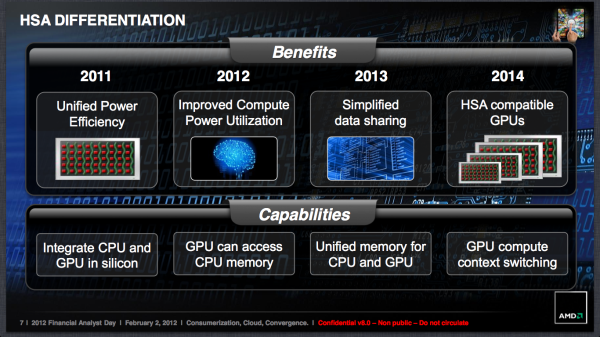upnorthsox
Veteran
Depending on what it actually is, one could easily fit such an APU in probably < 350mm² (even < 300mm² would be possible, if there are not more than 20 CUs). That shouldn't be a problem for 28nm yields mid/end 2013. If you want to fit some DRAM stacks together with the GPU die on an interposer, that interposer needs to be at least twice as large (probably closer to 3x the area). Last number I've read somewhere, is that an 300mm interposer wafer goes for 500 to 600$ (can be done with old tech), that's roughly an order of magnitude cheaper than a 28nm wafer. That means the interposer costs may be about a third of the APU die. But that is just a very rough guess and the assembly costs come on top of it.
My feeling is that 8 cores with 20 CU's may be possible to be around 275mm2, esp. if the bulk of the MC is moved to the dram stack(s). That may be too optimistic though. Still < 300mm2 imo is realistic.
I think your estimates are too high for what would be needed for dram stacks:
Hynix presented a 1.2V 38nm 2Gb DDR4 DRAM with a die size of only 43.15mm². The power consumption was roughly 50% lower than that of the chip’s DDR3 counterpart, even though the new chip’s core frequency is the same as the DDR3 part. Hynix also presented a DDR3 DRAM that uses a 23nm process to produce a 30.9mm² chip -- the smallest die size ever reported for this density. Hynix brought also a special clocking circuit for through silicon via (TSV) DRAM interfaces that uses sophisticated logic to align the clock with data from all the chips in a multi-chip stack.
Even with ddr4 you wouldn't need much more than 100mm2 of interposer area for 2 stacks. That then is an interposer in the 425-450mm2 range and a mobo around the size of an index card (10cm x 15cm).
Last edited by a moderator:

